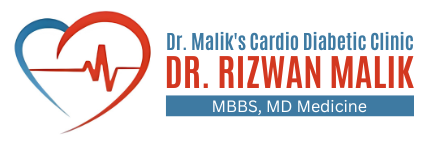Imagine this: You walk into your doctor’s office feeling perfectly fine. But when they measure your blood pressure, it’s unexpectedly high. You’re confused because it’s normal when checked at home.
This phenomenon is called White Coat Hypertension.
White coat hypertension is more common than you might think. It occurs when blood pressure readings are higher in a medical setting but normal elsewhere. Although it might seem harmless, untreated white coat hypertension can potentially lead to real hypertension over time.
In this article, let’s dive into the causes, risks, and strategies for managing white coat hypertension effectively.
What Is White Coat Hypertension?
White coat hypertension refers to elevated blood pressure that occurs in a clinical environment but returns to normal in other settings. The “white coat” symbolizes the traditional white lab coats worn by doctors, which can unintentionally trigger anxiety and stress in patients.
Causes of White Coat Hypertension
1. Anxiety and Stress
The anxiety of visiting a healthcare provider can cause temporary spikes in blood pressure. Some people subconsciously worry about health issues, leading to stress-induced hypertension.
2. Fear of Diagnosis
The fear of being diagnosed with a health problem can heighten the body’s fight-or-flight response, leading to increased heart rate and blood pressure.
3. Lack of Familiarity
Unfamiliar settings, procedures, or even clinical smells can make some people uneasy, triggering physiological stress responses.
4. Existing Mild Hypertension
People on the borderline of hypertension might experience exaggerated spikes when stressed, worsening the condition temporarily.
Symptoms
There are no specific symptoms that distinguish white coat hypertension from regular hypertension. It is often discovered accidentally during routine checks.
Risks Associated with White Coat Hypertension
While it might seem harmless initially, long-term white coat hypertension can:
- Progress into sustained hypertension
- Increase the risk of cardiovascular diseases
- Damage arteries and other organs
- Cause anxiety disorders related to health
Early detection and monitoring are key.
How White Coat Hypertension Happens
Anxiety/Stress → Sympathetic Nervous System Activation → Increased Heart Rate → Blood Vessel Constriction → Elevated Blood Pressure
How to Diagnose White Coat Hypertension
- Home Monitoring: Regularly measuring your blood pressure at home at different times.
- Ambulatory Blood Pressure Monitoring (ABPM): Wearing a device that measures your BP every 30 minutes over 24 hours.
- Multiple Clinical Visits: Comparing readings from multiple doctor visits.
Management and Treatment
1. Regular Monitoring
Track your blood pressure at home to differentiate between genuine hypertension and white coat effects.
2. Stress Reduction Techniques
- Deep breathing exercises
- Meditation
- Yoga
- Progressive muscle relaxation
3. Lifestyle Modifications
- Healthy Diet: Reduce salt, processed foods, and increase fruits and vegetables.
- Exercise Regularly: At least 30 minutes most days of the week.
- Limit Alcohol and Quit Smoking: Both habits are linked to blood pressure spikes.
4. Counseling or Therapy
If anxiety is a major contributor, cognitive-behavioral therapy (CBT) or counseling can help address underlying fears and stress.
5. Medication (If Necessary)
If your home readings also show elevated pressure or if white coat hypertension progresses to sustained hypertension, your doctor may prescribe antihypertensive medication.
Prevention Tips
- Arrive early for your appointment to relax.
- Practice deep breathing while waiting.
- Avoid caffeine or heavy meals before your visit.
- Inform your doctor if you usually have higher readings in the clinic.
White coat hypertension is a real and important condition to recognize. Although it may seem harmless, it requires careful monitoring and management to prevent progression into chronic hypertension. By staying proactive with home checks, stress management, and lifestyle changes, you can protect your long-term heart health.
If you suspect white coat hypertension, talk openly with your healthcare provider—they can guide you toward the best strategy for maintaining healthy blood pressure.
FAQs
Q1: Is white coat hypertension dangerous?
While not immediately dangerous, untreated white coat hypertension can lead to real hypertension and related complications over time.
Q2: Can white coat hypertension be cured?
There’s no “cure,” but managing stress and regular monitoring can help prevent progression.
Q3: Should I take medication for white coat hypertension?
Typically, medication is only prescribed if blood pressure remains consistently high outside clinical settings as well.
